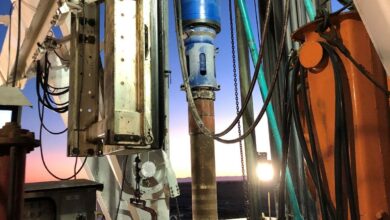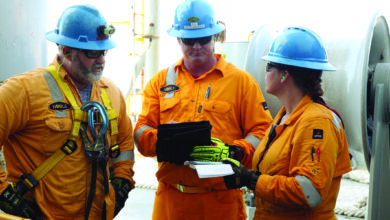Drilling & Completion News
ADNOC, Total deliver UAE’s first unconventional gas
ADNOC and Total have announced the delivery of the first unconventional gas from the United Arab Emirates (UAE). The gas was delivered from the Ruwais Diyab Unconventional Gas Concession, located 200 km west of Abu Dhabi.

The unconventional gas was delivered through a purpose-built gas pipeline and centralized early production facility in the Diyab field.
ADNOC sees this as a milestone toward future full field development and an important step toward reaching its target of producing 1 billion standard cu ft of gas from the concession before 2030.
The announcement of first gas from Ruwais Diyab comes two years after ADNOC and Total signed the region’s first unconventional gas concession agreement. It also comes a year after Abu Dhabi’s Supreme Petroleum Council announced the discovery of 160 trillion sq cu ft of unconventional gas recoverable resources.
In separate news, ADNOC has signed an exploration concession agreement that awards the exploration rights for Abu Dhabi Onshore Block 5 to Occidental Petroleum.
Occidental will hold a 100% stake in the exploration phase, investing up to $140 million – including a participation fee – to explore for and appraise oil and gas opportunities in the block that covers an onshore area of 4,212 sq km southeast of the city of Abu Dhabi.
Transocean contracts with Petrobras extended
Transocean announced that Petrobras has exercised a 680-day pre-existing, fixed price option for the Deepwater Corcovado, and an 815-day pre-existing, fixed price option for the Deepwater Mykonos. These contract extensions add approximately $297 million to Transocean’s backlog. Both rigs will continue to operate in Brazil.
Maersk integrator wins one-well contract from OMV
Maersk Drilling was awarded a one-well contract from OMV for the low-emissions jackup Maersk Integrator. In continuation of its previous work scope, the rig will drill one exploration well in the Ommadawn prospect offshore Norway. The contract is expected to commence in mid-2021, with an estimated duration of 52 days.
Gas discovery near Heidrun field offshore Norway
ConocoPhillips Skandinavia recently announced a new gas condensate discovery in production license 1009, located 22 miles northwest of the Heidrun field and 150 miles from the coast of Norway in the Norwegian Sea.
ConocoPhillips is operator of the license, with 65% working interest. PGNiG Upstream Norway AS holds 35% working interest.
New FORGE well aims to prove commercial viability of enhanced geothermal systems
The Utah Frontier Observatory for Research in Geothermal Energy (FORGE), funded by the US Department of Energy (DOE), recently commenced the drilling of its first highly deviated deep well.
Highly deviated wells are frequently drilled for oil and gas production but not by the geothermal industry. The Utah FORGE team will be the first to tackle this challenge while drilling in hot, hard crystalline granite.
The upper part of the well will be drilled vertically through approximately 4,700 ft of sediments, at which point it will penetrate into hard crystalline granite. At about 6,000 ft, the well will be gradually steered at 5°/ 100 ft until it reaches an inclination of 65° from its vertical point. The total length of the well will be approximately 11,000 ft with the toe, reaching a vertical depth of 8,500 ft. The temperature at this depth will be 440°F.
“This is an exciting phase in the Utah FORGE project and is key to proving enhanced geothermal systems (EGS) technologies are commercially viable,” said Dr Joseph Moore, Principal Investigator of Utah FORGE.
“The goal of our research is to test tools and technologies for the creation of a geothermal resource where none exists naturally. Developing cost-effective EGS technologies is an important step in capturing the enormous energy potential beneath our feet and bringing low-cost, environmentally green and renewable energy across the US,” Mr Moore said.
Once the well is completed, a series of tests will be run to facilitate the development of the EGS resource. Some of the tests will include determining the stress conditions through short-term injection experiments, during which microseismicity will be carefully monitored. Other tests will allow for the interpretation of the orientation and distribution of the existing and induced fractures in the granite, which will form the pathways for water to circulate and heat up in the newly created EGS reservoir.




